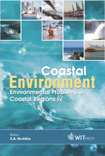The Importance Of Meteorology In Determining Surface Ozone Concentrations – A Neural Network Approach
Price
Free (open access)
Transaction
Volume
58
Pages
Published
2002
Size
442 kb
Paper DOI
10.2495/CENV020381
Copyright
WIT Press
Author(s)
G Latini, R Cocci Grifoni & G Passerini
Abstract
The importance of meteorology in determining surface ozone concentrations - a neural network approach G. Latini, R. Cocci Grifoni, G. Passerini Dipartimento di Energetica, Ancona University, Italy. Abstract In this paper are investigated the effects of local meteorology on surface ozone concentrations on an hourly basis for a period of at least one year in a complex coastal area where land-sea breezes influence ozone concentrations. Because ozone formation is a non-linear process, feed-forward back propagation neural network was developed to model hourly ozone concentrations from meteorological and No, data. This method can weight relationships that are difficult to subjectively quantify and allows non-linear relationships between variables. The use of additional meteorological and nitrogen oxides dioxide (NO and NO2) time series as a potential inputs of the forecasting process is also considered. 1 Introduction Surface ozone concentrations are determined by complex interactions between radiative chemical and meteorological processes. Ozone is classified as a secondary pollutant since it is not released directly into the atmosphere, but is photochemically produced in presence of its precursors and sunlight. In addition, ozone concentrations are strongly linked to the meteorological conditions in the boundary layer and also to long-range transport of both ozone and its precursors. The ozone conducive meteorological conditions, namely high insolation, high temperature, low wind, and low midday relative humidity can be used to characterize the local ozone episodes. Very high local ozone concentrations observed in episodes are often heavily influenced by certain meso-scale circulations embedded in large, stagnant synoptic systems. Most of these meso-
Keywords





